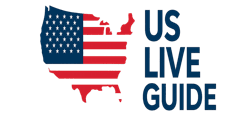Minnesota is consistently ranked among the top U.S. states for healthcare quality, patient outcomes, and long-term care services. With its strong medical institutions, state-level health insurance programs, and expanding elderly care network, Minnesota provides a wide range of solutions for residents seeking reliable healthcare and support.
1. Health Insurance in Minnesota
Minnesota offers multiple layers of healthcare coverage:
-
Private Health Insurance: Available through employers or the individual market. Minnesota residents can shop for plans via MNsure, the state’s official health insurance marketplace.
-
MinnesotaCare: A subsidized insurance program for low- to middle-income residents who do not qualify for Medicaid but cannot afford private coverage.
-
Medical Assistance (Medicaid): Provides free or low-cost coverage for eligible low-income individuals, children, and elderly residents.
-
Medicare in Minnesota: Seniors (65+) and people with disabilities can access Medicare, often combined with private Medicare Advantage or Supplemental (“Medigap”) plans.
✅ Minnesota has one of the highest Medicare Advantage enrollment rates in the U.S., thanks to broad coverage networks.
2. Elderly Care Services in Minnesota
With an aging population, Minnesota has expanded its elderly care infrastructure:
-
Nursing Homes & Assisted Living: The state regulates facilities through the Minnesota Department of Health, ensuring high standards for safety and care.
-
Memory Care Centers: Specialized facilities for Alzheimer’s and dementia patients are growing, especially in the Minneapolis–St. Paul metro area.
-
Adult Day Care Services: Community-based programs provide daytime support for elderly individuals while families maintain work or other responsibilities.
3. Home Care and In-Home Support
Minnesota places strong emphasis on aging in place — allowing seniors to remain in their homes while receiving necessary care.
-
Home Health Aides: Licensed professionals assist with medication management, mobility support, and daily health needs.
-
Homemaker Services: Help with meals, cleaning, and household tasks.
-
Personal Care Assistance (PCA) Program: Funded through Medicaid, this program allows eligible individuals to hire caregivers, sometimes even family members, to provide care at home.
This approach not only reduces costs compared to nursing homes but also improves quality of life for seniors.
4. Insurance Coverage for Long-Term Care
Long-term care insurance is an important consideration in Minnesota:
-
Private Long-Term Care Insurance: Covers nursing homes, assisted living, and home care costs not included in standard health insurance.
-
Hybrid Policies: Some life insurance policies now offer long-term care riders, combining two forms of coverage.
-
State Partnerships: Minnesota participates in the Long-Term Care Partnership Program, which protects a portion of policyholders’ assets if they later need Medicaid.
5. Challenges and Future Trends
While Minnesota’s healthcare and elderly care system is strong, it faces some challenges:
-
Rising Costs: Healthcare and long-term care expenses continue to grow.
-
Workforce Shortages: Demand for nurses, caregivers, and home health aides is increasing faster than supply.
-
Rural Access Issues: Seniors in rural Minnesota often face fewer options for specialized care.
Future trends suggest:
-
Expansion of telehealth services for both general health and elderly support.
-
More investment in community-based programs to reduce reliance on costly nursing homes.
-
Growing popularity of insurance products tailored to aging populations.
